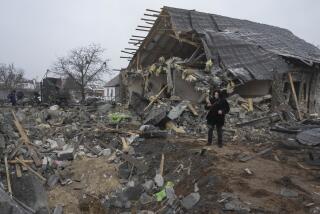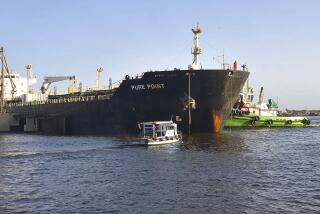To save money, look to nukes
The deficit reduction plans now on the table in Washington require some $400 billion in defense spending cuts starting in 2013 and extending for a decade. To achieve that, tough choices will be needed. There is fat, but only so much. To avoid cutting any more muscle than necessary — especially in conventional forces, which do all of the actual fighting — we need to look to nuclear forces as well.
Unfortunately, during last year’s debate over ratification of the New START arms control treaty with Russia, the Obama administration agreed to demands from Senate Republicans to increase spending on nuclear capabilities. This is the wrong policy for an age of austerity.
The logic of frugality should not be pushed to extremes. We need a dependable nuclear arsenal. And our strategic forces should remain as large as Russia’s, not out of any concern that we will fight our former Cold War enemy in a nuclear exchange but to avoid giving Moscow any more reason to push its weight around with its neighbors. In addition, there is a case for targeted nuclear R&D, including building a simpler, safer, more reliable nuclear warhead that would not require testing. That will take some money.
But we do not need to overinsure. The United States is allowed by treaty to have about 1,550 strategic warheads; we do not need all of our current stock of several thousand more tactical and surplus warheads, even if international agreements don’t constrain them. Nor do we need to hedge against a revanchist Russia by retaining the capability to rapidly increase warheads on missiles. Our bomber fleet provides ample insurance against Russian cheating, which would in any case be far less foreboding than in the Cold War.
A change in philosophy — from equally modernizing each leg in the nuclear triad to accepting a more economical overall capability — would allow us to remain at nuclear parity with Russia and still save money. The triad is made up of land-based ICBMs (intercontinental ballistic missiles), sea-based SLBMs (submarine-launched ballistic missiles) and airborne strategic bombers.
We could, for example, stop making “D5” SLBM nuclear-tipped missiles and cut back the current fleet of 14 nuclear-armed submarines to eight, with no significant reduction in capability or robustness of the submarine leg of the triad. How? We could increase the number of warheads deployed per missile, in keeping with the missile’s originally designed capabilities; and we also have the ability to increase the number of missiles per submarine. Many land-based Minuteman ICBM missiles could be retired, allowing savings in operating costs and in refurbishment of those missiles. We could eliminate at least half the current total, meeting more of our treaty allowance with weapons attributed to the bomber force.
The Department of Energy’s nuclear weapons assets could also be scaled back. It has expensive plans for a dedicated new facility to make the plutonium “pits” at the heart of most nuclear weapons. As the nuclear arsenal shrinks, that expensive plan won’t be necessary. Overall, one of the country’s two main weapons-design laboratories, at Los Alamos, N.M., and Livermore, Calif., could gradually get out of the nuclear weapons business. Sandia National Laboratory in New Mexico could remain involved in nuclear weapons research in support of the remaining design lab, so the nation would have substantial expertise at multiple locations.
We can also reduce spending on missile defense. Missile defense is important; it is hardly the anachronism of U.S.-Russian enmity that critics sometimes imply. But it is also overfunded, with too many systems in various stages of development and deployment. Current programs include upgrades to the ground-based strategic systems in California and Alaska, separate sea-based and land-based theater defense systems, and two land-based short-range defense systems. At least one of the latter programs could be canceled without harming our defense capability.
How much could such cuts in nuclear forces save us? I estimate about $30 billion to $35 billion over the 10-year period being debated by budgeteers. That would approach 10% of the necessary savings in defense; it’s real money.
And it is a much better idea than increasing nuclear spending by the $80 billion or so agreed on last year during the Senate’s New START ratification debate. This is the kind of tough but doable policy change that is required of the military, and our politicians, if we are to meet what has become our No. 1 national security challenge: the nation’s woeful fiscal and economic condition.
Michael O’Hanlon, director of research in foreign policy at the Brookings Institution, is author of the just published e-book “The Wounded Giant: America’s Armed Forces in an Age of Austerity.”
More to Read
A cure for the common opinion
Get thought-provoking perspectives with our weekly newsletter.
You may occasionally receive promotional content from the Los Angeles Times.






